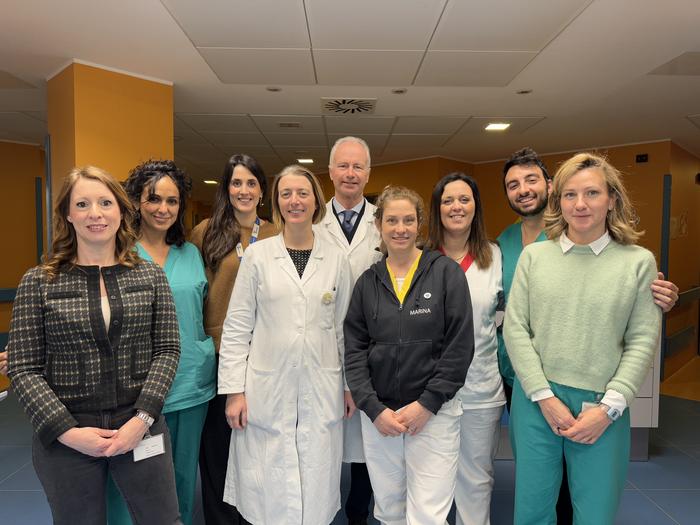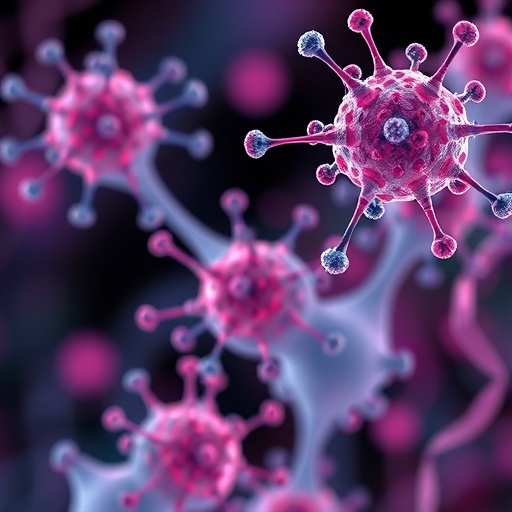
Gene Therapy Offers Hope for Children with Metachromatic Leukodystrophy: Long-term Study Shows Promising Results
Metachromatic leukodystrophy (MLD) is a rare and devastating genetic neurodegenerative disorder that causes progressive deterioration of motor and cognitive functions in children. This fatal disease is characterized by the accumulation of sulfatides due to mutations in the ARSA gene, which critically impairs the central and peripheral nervous systems. Until recently, treatment options have been limited to palliative care, offering minimal delay in disease progression. However, a groundbreaking gene therapy approach is now demonstrating remarkable long-term efficacy, potentially transforming the future for affected children.
A robust clinical study recently published in the New England Journal of Medicine has delivered proof that early intervention with gene therapy can substantially preserve motor skills and cognitive function in children diagnosed with MLD. This investigation involved 39 pediatric patients treated at the San Raffaele Hospital in Milan, Italy. Under the leadership of pediatric immunohaematologists Francesca Fumagalli and Valeria Calbi, guided by Alessandro Aiuti of the San Raffaele-Telethon Institute for Gene Therapy (SR-Tiget), the study spans over a decade of meticulous research and clinical follow-up.
The gene therapy in question employs autologous hematopoietic stem and progenitor cells that are genetically modified ex vivo to express functional ARSA enzyme. After collection, patients undergo chemotherapy to condition the bone marrow niche, allowing the corrected cells to engraft and produce the missing enzyme systemically. This approach aims to halt or significantly slow the demyelination process that defines MLD pathogenesis. Such a sophisticated cellular and molecular therapy relies on vector technology to safely deliver the corrective genetic material, and it reflects more than 20 years of pioneering translational research.
Importantly, the study compared outcomes of treated patients to a historical cohort of 49 untreated children, providing a comprehensive understanding of gene therapy’s impact over time. The primary endpoints included event-free survival, defined by the absence of severe motor deterioration or death, and preservation of cognitive abilities. Results unequivocally demonstrated that patients treated during the pre-symptomatic phase exhibited extraordinary event-free survival rates, with some groups showing 100% preservation at follow-up milestones extending to six and ten years.
Children harboring the late-infantile form of MLD, who were treated before symptom onset, exemplified the most pronounced benefits. At six years of age, all patients in this subgroup maintained full motor function and cognitive skills, contrasting starkly with untreated counterparts who rapidly progressed to severe impairment or death. Similarly, children with the early-juvenile form exhibited noteworthy stabilization, though efficacy was somewhat attenuated in patients showing mild symptoms at treatment initiation. These findings not only illustrate the critical importance of timing in therapeutic administration but also confirm the durability of gene therapy’s protective effects.
The implications of this research extend beyond clinical efficacy to highlight an urgent healthcare priority: the necessity of early diagnosis. Newborn screening emerges as a pivotal tool to identify infants with MLD before irreversible neurological damage occurs. Despite advances, MLD is not yet included in the standard neonatal screening panels in most countries, rarely tested except in limited pilot programs. These diagnostic gaps delay potential intervention, often relegating children to symptomatic treatment windows where therapy benefits diminish drastically.
Current newborn screening technologies typically involve biochemical assays performed on heel-prick blood samples within the first days of life. Expanding these programs to include MLD could revolutionize disease management by enabling timely application of gene therapy. Pilot initiatives in Tuscany and Lombardy in Italy are underway, aiming to evaluate the feasibility and outcomes of nationwide MLD screening. Although no positive cases have yet arisen from roughly 50,000 screened infants, these pilot programs represent critical steps toward integrating MLD detection into public health policies.
The development and deployment of this gene therapy are the culmination of strategic collaborations between academic institutions such as Fondazione Telethon and Ospedale San Raffaele, coupled with industry partners like Orchard Therapeutics. This therapeutic approach gained regulatory approval in the European Union in 2020 and has been accessible and reimbursed in Italy since 2022. Its availability signifies a paradigm shift in treating monogenic neurodegenerative disorders, transcending conventional care models to embrace precision medicine.
Beyond its clinical achievements, this gene therapy represents a sophisticated nexus of molecular biology, gene editing, immunology, and pediatric medicine. It leverages viral vectors to insert functional transgenes safely while requiring carefully orchestrated patient conditioning to facilitate engraftment. Moreover, the therapeutic regimen necessitates rigorous long-term monitoring to assess sustained enzyme expression, immune response, and neurodevelopmental outcomes, all of which are indispensable for validating enduring success.
The collective insights from this extensive study also emphasize the invaluable contribution of patient families. Many untreated children in the control cohort were siblings of treated patients, highlighting not only the natural history of disease progression but also the ethical and emotional dimensions embedded within clinical trials of life-altering treatments. Their participation underscores the human imperative behind scientific advancement and the profound gratitude owed to those who make such research possible.
Experts stress that while gene therapy’s potential is extraordinary, challenges persist. These include optimizing treatment protocols for symptomatic patients, reducing treatment-related risks, and expanding access across health systems worldwide. Continued innovation is essential to enhance vector designs, improve conditioning regimens, and integrate gene therapy within comprehensive multidisciplinary care frameworks to maximize patient outcomes.
In summary, the results of this landmark study herald a new era in the battle against metachromatic leukodystrophy. Gene therapy offers a tangible chance to arrest a relentless genetic disorder, safeguarding quality of life for vulnerable children. It is a compelling testament to decades of concerted research and collaboration, underscoring the transformative power of early diagnosis and precision therapeutics in neurogenetics.
Subject of Research: People
Article Title: Long-Term Effects of Atidarsagene Autotemcel for Metachromatic Leukodystrophy
News Publication Date: 24-Apr-2025
Web References: http://dx.doi.org/10.1056/NEJMoa2405727
References: New England Journal of Medicine, 2025, Long-Term Effects of Atidarsagene Autotemcel for Metachromatic Leukodystrophy
Image Credits: Fondazione Telethon, Ospedale San Raffaele
Keywords: Metachromatic leukodystrophy, gene therapy, hematopoietic stem cells, ARSA enzyme, neurodegenerative disease, newborn screening, pediatric immunohaematology, long-term clinical outcomes, San Raffaele-Telethon Institute, precision medicine
Tags: ARSA gene mutationsclinical research in gene therapyearly intervention for MLDex vivo gene modification techniquesgene therapy for metachromatic leukodystrophylong-term efficacy of gene therapyneurodegenerative disease managementNew England Journal of Medicine findingspediatric neurodegenerative disorders treatmentSan Raffaele Hospital gene therapy studysulfatide accumulation in MLDtransformative treatments for children with MLD





